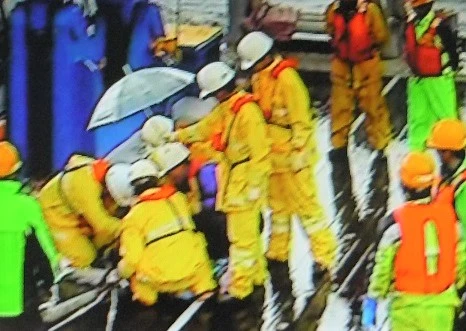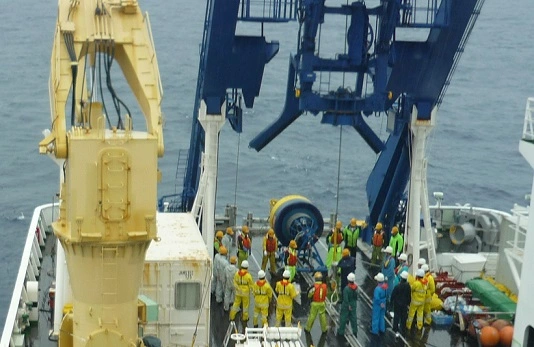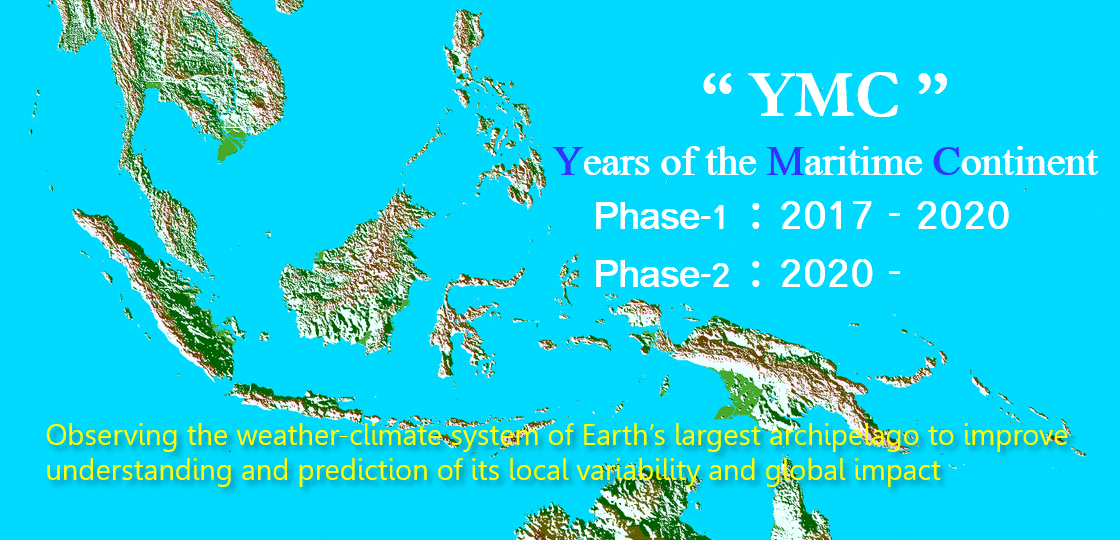|
|
|
Tuesday, Nov. 28, 2017 : Bengkulu
"Strong northwesterly winds and precipitation persisted in Bengkulu"
From November 26, strong northwesterly winds were observed at Bengkulu Meteorological Observatory by surface meteorological observations and balloon soundings. Northwesterly winds were observed from near the surface up to ~5 km, with the maximum wind speed occurring in the 1-3 km layer (22.3 m/s). The horizontal winds at 1.0 km height estimated from radar observations showed strong northwesterly winds both over the land and the sea (Figs 1-3).
Meanwhile, radar observations showed that enhanced convection developed over the sea to the west of Bengkulu, particularly during the early morning hours. The convection migrated eastward from the sea toward the land on the western coast of Sumatra Island, causing persisted precipitation from 26 to 28 November over Bengkulu (Figs 4-6). The present situation is similar to that during mid to late December 2015 in an active phase of the MJO during the pre-YMC field campaign.
(Wu and Dodi)


Tuesday, Nov. 28, 2017 : Mirai (1)
"We were at the center of a cyclonic vortex."
The m-TRITON buoy at 8S, 95E has been successfully deployed under continuous rainfall.
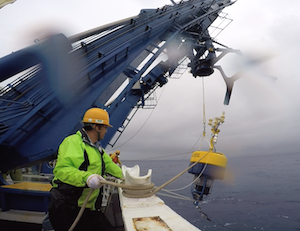
The continuous rainfall was due to the fact that we were at the center of a cyclonic vortex.
The crews' operation was hard but today's observation should be good.
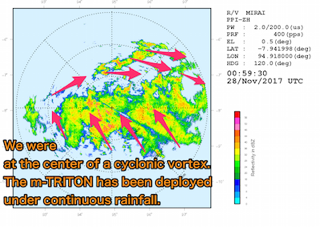
(reports by Qoosaku MOTEKI)
Tuesday, Nov. 28, 2017 : Mirai (2)
"An umbrella for m-triton"
In the drizzle, we deployed the first m-triton mooring of the cruise. The m-triton is an observation buoy that reports both surface atmosphere and ocean conditions. Having a line length that is greater than the sea depth, the m-triton mooring can adapt to the rapid currents in the Indian Ocean.
On the R/V Mirai, the engineers and crew handle m-triton with special care: never drag the line, walk out with the rope to pace the pay-out speed while others monitor gauges, shelter the water sensors from the equatorial heat, and use an umbrella to cover connectors when they are being joined to shield them from the frequent rain.
(reports by K.T.)
